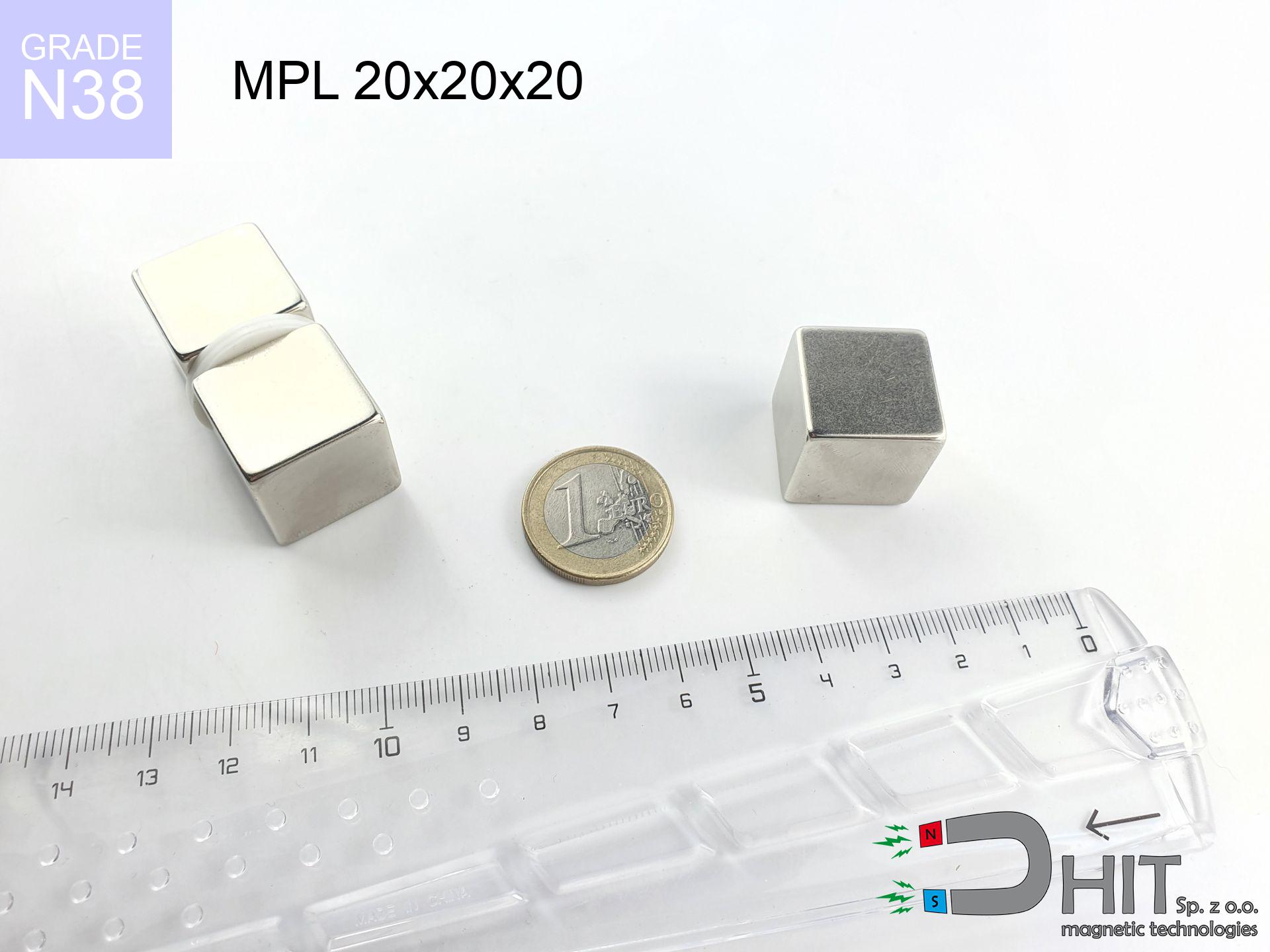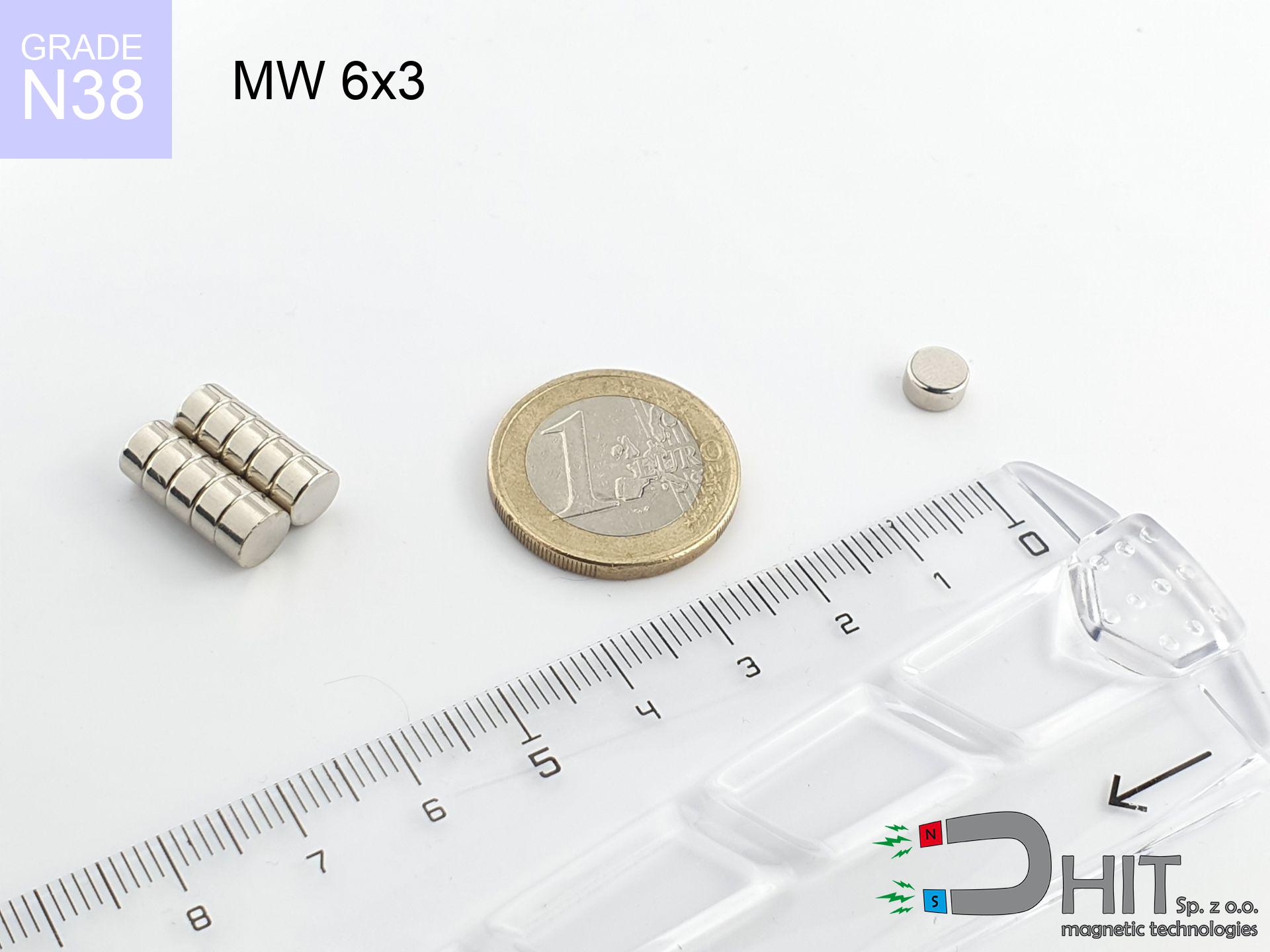BM 950x180x70 [4x M8] - magnetic beam
magnetic beam
Catalog no 090225
GTIN/EAN: 5906301812609
length
950 mm [±1 mm]
Width
180 mm [±1 mm]
Height
70 mm [±1 mm]
Weight
61000 g
8564.49 ZŁ with VAT / pcs + price for transport
6963.00 ZŁ net + 23% VAT / pcs
bulk discounts:
Need more?
Contact us by phone
+48 888 99 98 98
if you prefer contact us using
request form
the contact section.
Strength as well as form of magnetic components can be reviewed using our
magnetic mass calculator.
Orders placed before 14:00 will be shipped the same business day.
Detailed specification - BM 950x180x70 [4x M8] - magnetic beam
Specification / characteristics - BM 950x180x70 [4x M8] - magnetic beam
| properties | values |
|---|---|
| Cat. no. | 090225 |
| GTIN/EAN | 5906301812609 |
| Production/Distribution | Dhit sp. z o.o. |
| Country of origin | Poland / China / Germany |
| Customs code | 85059029 |
| length | 950 mm [±1 mm] |
| Width | 180 mm [±1 mm] |
| Height | 70 mm [±1 mm] |
| Weight | 61000 g |
| Manufacturing Tolerance | ±1 mm |
Physical properties of sintered neodymium magnets Nd2Fe14B at 20°C
| properties | values | units |
|---|---|---|
| Vickers hardness | ≥550 | Hv |
| Density | ≥7.4 | g/cm3 |
| Curie Temperature TC | 312 - 380 | °C |
| Curie Temperature TF | 593 - 716 | °F |
| Specific resistance | 150 | μΩ⋅cm |
| Bending strength | 250 | MPa |
| Compressive strength | 1000~1100 | MPa |
| Thermal expansion parallel (∥) to orientation (M) | (3-4) x 10-6 | °C-1 |
| Thermal expansion perpendicular (⊥) to orientation (M) | -(1-3) x 10-6 | °C-1 |
| Young's modulus | 1.7 x 104 | kg/mm² |
Material specification
| iron (Fe) | 64% – 68% |
| neodymium (Nd) | 29% – 32% |
| boron (B) | 1.1% – 1.2% |
| dysprosium (Dy) | 0.5% – 2.0% |
| coating (Ni-Cu-Ni) | < 0.05% |
Sustainability
| recyclability (EoL) | 100% |
| recycled raw materials | ~10% (pre-cons) |
| carbon footprint | low / zredukowany |
| waste code (EWC) | 16 02 16 |
Other deals
Advantages and disadvantages of Nd2Fe14B magnets.
Benefits
- They do not lose magnetism, even during around 10 years – the drop in lifting capacity is only ~1% (theoretically),
- They maintain their magnetic properties even under external field action,
- In other words, due to the aesthetic layer of nickel, the element becomes visually attractive,
- Magnetic induction on the surface of the magnet turns out to be impressive,
- Through (adequate) combination of ingredients, they can achieve high thermal resistance, allowing for operation at temperatures approaching 230°C and above...
- Considering the ability of precise shaping and adaptation to individualized solutions, magnetic components can be produced in a wide range of shapes and sizes, which increases their versatility,
- Huge importance in electronics industry – they are commonly used in computer drives, drive modules, medical devices, also industrial machines.
- Relatively small size with high pulling force – neodymium magnets offer impressive pulling force in tiny dimensions, which makes them useful in miniature devices
Weaknesses
- Susceptibility to cracking is one of their disadvantages. Upon intense impact they can fracture. We advise keeping them in a strong case, which not only secures them against impacts but also increases their durability
- Neodymium magnets lose their strength under the influence of heating. As soon as 80°C is exceeded, many of them start losing their power. Therefore, we recommend our special magnets marked [AH], which maintain durability even at temperatures up to 230°C
- Due to the susceptibility of magnets to corrosion in a humid environment, we recommend using waterproof magnets made of rubber, plastic or other material immune to moisture, when using outdoors
- Limited ability of creating threads in the magnet and complicated forms - preferred is a housing - magnetic holder.
- Possible danger to health – tiny shards of magnets can be dangerous, when accidentally swallowed, which becomes key in the context of child health protection. Furthermore, tiny parts of these devices are able to be problematic in diagnostics medical when they are in the body.
- Due to expensive raw materials, their price is relatively high,
Pull force analysis
Breakaway strength of the magnet in ideal conditions – what contributes to it?
- with the use of a yoke made of low-carbon steel, ensuring full magnetic saturation
- possessing a massiveness of min. 10 mm to avoid saturation
- characterized by lack of roughness
- with total lack of distance (no coatings)
- under perpendicular force direction (90-degree angle)
- at conditions approx. 20°C
Practical aspects of lifting capacity – factors
- Distance (betwixt the magnet and the metal), as even a tiny distance (e.g. 0.5 mm) can cause a reduction in force by up to 50% (this also applies to paint, corrosion or dirt).
- Angle of force application – maximum parameter is available only during perpendicular pulling. The force required to slide of the magnet along the surface is typically many times smaller (approx. 1/5 of the lifting capacity).
- Wall thickness – the thinner the sheet, the weaker the hold. Magnetic flux passes through the material instead of generating force.
- Material type – the best choice is pure iron steel. Hardened steels may attract less.
- Surface structure – the smoother and more polished the surface, the better the adhesion and stronger the hold. Unevenness acts like micro-gaps.
- Thermal environment – temperature increase results in weakening of induction. Check the thermal limit for a given model.
Lifting capacity testing was conducted on plates with a smooth surface of suitable thickness, under perpendicular forces, however under shearing force the lifting capacity is smaller. Moreover, even a minimal clearance between the magnet and the plate decreases the lifting capacity.
Precautions when working with neodymium magnets
No play value
Only for adults. Small elements pose a choking risk, causing severe trauma. Keep away from kids and pets.
Power loss in heat
Monitor thermal conditions. Heating the magnet to high heat will destroy its properties and strength.
Allergy Warning
Some people experience a sensitization to nickel, which is the common plating for neodymium magnets. Extended handling might lead to skin redness. It is best to use protective gloves.
Data carriers
Do not bring magnets close to a wallet, computer, or TV. The magnetism can destroy these devices and erase data from cards.
GPS and phone interference
Note: neodymium magnets produce a field that confuses sensitive sensors. Maintain a separation from your phone, device, and navigation systems.
Respect the power
Exercise caution. Neodymium magnets act from a distance and connect with huge force, often faster than you can move away.
Dust is flammable
Combustion risk: Rare earth powder is highly flammable. Avoid machining magnets without safety gear as this risks ignition.
Warning for heart patients
Patients with a ICD should maintain an safe separation from magnets. The magnetic field can disrupt the operation of the life-saving device.
Magnets are brittle
Watch out for shards. Magnets can explode upon violent connection, ejecting sharp fragments into the air. Eye protection is mandatory.
Serious injuries
Danger of trauma: The pulling power is so great that it can result in hematomas, pinching, and broken bones. Protective gloves are recommended.

![Magnetic beam (separator) BM 950x180x70 [4x M8] Magnetic beam (separator) BM 950x180x70 [4x M8]](https://cdn3.dhit.pl/graphics/banners/magnet.webp)
![BM 950x180x70 [4x M8] - magnetic beam](https://cdn3.dhit.pl/graphics/products/bm-950x180x70-4x-m8-ves.jpg)
![SM 25x175 [2xM8] / N52 - magnetic separator SM 25x175 [2xM8] / N52 - magnetic separator](https://cdn3.dhit.pl/graphics/products/sm-25x175-2xm8-gif.jpg)


![SM 25x200 [2xM8] / N42 - magnetic separator SM 25x200 [2xM8] / N42 - magnetic separator](https://cdn3.dhit.pl/graphics/products/sm-25x200-2xm8-dos.jpg)

